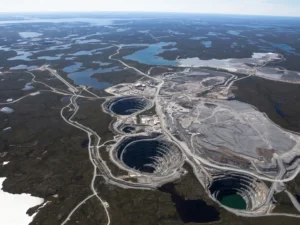
LECTURE – Diamond: A Multifaceted Gem
QGS hosted former QGS advisor and emeritus professor, Jeff Tepper on February 15, 2025.
Jeff’s lecture described that diamonds have been revered as precious stones for over 2000 years, yet they are composed simply of carbon, one of the most common elements on Earth. He explained their rarity arises from the fact that they form at extreme pressures deep in the  Earth’s mantle and then are brought rapidly to the surface in CO2-rich explosive eruptions. No such eruptions have occurred in human history, but we know they occur only in the interiors of continents, where they produce narrow vertical ‘kimberlite pipes’ that are mined in Africa, Russia, and, more recently, Canada. Tiny diamonds with a completely different origin have been found in meteorites, and some of these appear to predate the formation of our solar system. Nowadays, diamonds can also be grown artificially, and these synthetic crystals are widely used in industry and, increasingly, in jewelry. For geologists, diamonds are invaluable tools for understanding the Earth’s interior.
Earth’s mantle and then are brought rapidly to the surface in CO2-rich explosive eruptions. No such eruptions have occurred in human history, but we know they occur only in the interiors of continents, where they produce narrow vertical ‘kimberlite pipes’ that are mined in Africa, Russia, and, more recently, Canada. Tiny diamonds with a completely different origin have been found in meteorites, and some of these appear to predate the formation of our solar system. Nowadays, diamonds can also be grown artificially, and these synthetic crystals are widely used in industry and, increasingly, in jewelry. For geologists, diamonds are invaluable tools for understanding the Earth’s interior.  They are used to make tiny “anvils” that allow us to conduct high-pressure laboratory experiments that replicate conditions deep inside the Earth, and they commonly contain minute inclusions of other minerals that are our only actual samples of mantle materials from depths as great as ~400 km (250 miles). Jeff provided how and where diamonds form, offered a brief summary of how we search for them, described their history as gemstones, and detailed what they tell us about our planet’s deep interior.
They are used to make tiny “anvils” that allow us to conduct high-pressure laboratory experiments that replicate conditions deep inside the Earth, and they commonly contain minute inclusions of other minerals that are our only actual samples of mantle materials from depths as great as ~400 km (250 miles). Jeff provided how and where diamonds form, offered a brief summary of how we search for them, described their history as gemstones, and detailed what they tell us about our planet’s deep interior.
This in-person lecture was on Saturday, February 15, 2025 at the Port Townsend First Baptist Church.
ABOUT THE SPEAKER
Jeff Tepper was on faculty of the Geology Department at the University of Puget Sound from 2001-2021 and has been emeritus since then. He earned his PhD from UW, where he studied the origins of granite in the North Cascades. At UPS he taught classes in mineralogy, petrology, geochemistry, GIS, and geomythology. Most of his research projects focus on the magmatic and tectonic history of the Pacific Northwest (including Tamanowas Rock) and geochemistry of water and sediment from Tacoma-area lakes. Visit Jeff’s website for more information: https://www.jeffreytepper.com/.

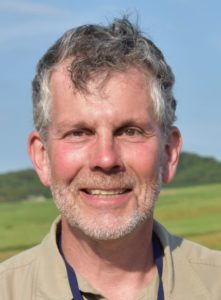
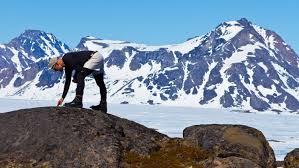
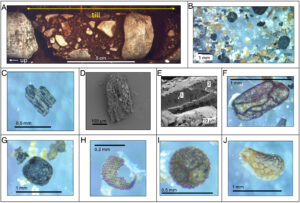
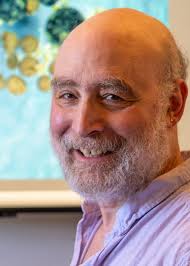 Paul Bierman, environmental science professor at the University of Vermont, develops methods to date ice and rocks. He has published in Science and Nature, with the findings covered by CNN, USA Today, and the Weather Channel. Paul is a 1993 graduate of the University of Washington (Seattle) where he earned his MS and doctorate in Geoscience after a BA at Williams College.
Paul Bierman, environmental science professor at the University of Vermont, develops methods to date ice and rocks. He has published in Science and Nature, with the findings covered by CNN, USA Today, and the Weather Channel. Paul is a 1993 graduate of the University of Washington (Seattle) where he earned his MS and doctorate in Geoscience after a BA at Williams College.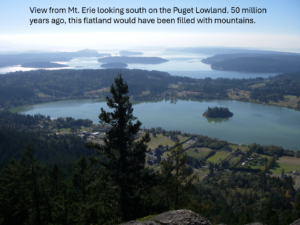
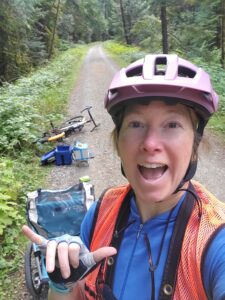 The Puget Lowland of Washington State contains several potentially dangerous seismic faults, including the Seattle fault, which runs south of downtown Seattle. To accurately assess the earthquake hazard in this region, we need to understand the architecture and geologic history of the rocks that host these faults, deep below the Puget Lowland. Geologists do this by using small changes in Earth’s gravity and magnetic fields to create images of the Earth’s subsurface. These rocks formed in a subduction zone 50 million years ago when a set of volcanic islands, similar to modern-day Iceland, collided with the edge of North America. This added a mass of rock, called Siletzia, to the continent. Megan showed us that as the islands piled up, they broke and folded into mountain ranges. South of Seattle, Siletzia was pushed up and over ancient North America, whereas to the north, Siletzia was pulled down and under the continent. She argued that a tear in Siletzia between these two zones eventually became the proto-Seattle fault, which provides a story for the Seattle fault’s origin and earliest history. Her images provided information that can improve models of ground shaking from future earthquakes affecting the greater Seattle urban area. *AGU abstract below.
The Puget Lowland of Washington State contains several potentially dangerous seismic faults, including the Seattle fault, which runs south of downtown Seattle. To accurately assess the earthquake hazard in this region, we need to understand the architecture and geologic history of the rocks that host these faults, deep below the Puget Lowland. Geologists do this by using small changes in Earth’s gravity and magnetic fields to create images of the Earth’s subsurface. These rocks formed in a subduction zone 50 million years ago when a set of volcanic islands, similar to modern-day Iceland, collided with the edge of North America. This added a mass of rock, called Siletzia, to the continent. Megan showed us that as the islands piled up, they broke and folded into mountain ranges. South of Seattle, Siletzia was pushed up and over ancient North America, whereas to the north, Siletzia was pulled down and under the continent. She argued that a tear in Siletzia between these two zones eventually became the proto-Seattle fault, which provides a story for the Seattle fault’s origin and earliest history. Her images provided information that can improve models of ground shaking from future earthquakes affecting the greater Seattle urban area. *AGU abstract below.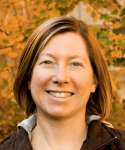 Megan Anderson is an earthquake geophysicist at the Washington Geological Survey. Megan spent her early years in Kent, WA, during which the eruption of Mt. St. Helens spurred her fascination with geology, which was her major at Carleton College in Minnesota. She studied subduction processes and earthquakes in South America for her Ph.D. at the University of Arizona. She has studied numerous tectonic regions of the world but has always made her way back to the Pacific Northwest because there is so much left to discover. She taught for ten years at Colorado College, dragging her students and equipment across the country to do research in Washington. She is now firmly planted in Olympia as home.
Megan Anderson is an earthquake geophysicist at the Washington Geological Survey. Megan spent her early years in Kent, WA, during which the eruption of Mt. St. Helens spurred her fascination with geology, which was her major at Carleton College in Minnesota. She studied subduction processes and earthquakes in South America for her Ph.D. at the University of Arizona. She has studied numerous tectonic regions of the world but has always made her way back to the Pacific Northwest because there is so much left to discover. She taught for ten years at Colorado College, dragging her students and equipment across the country to do research in Washington. She is now firmly planted in Olympia as home.